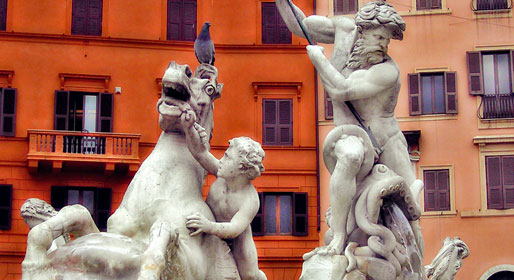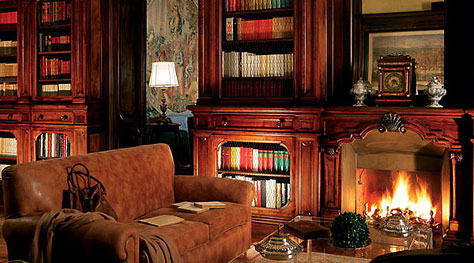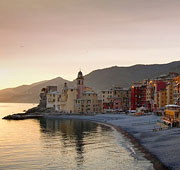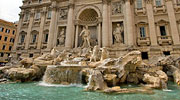Capital gains
Old and new symbols of Italy's fascinating capital city
It is hardly surprising if it was in Rome, the eternal city, that Italy's "Dolce Vita" was born. The historic center of Italy's magnificent capital is testimony to the constant cultural and artistic activity which has animated Rome since the times of the Emperor Augustus to this very day.
Ground breaking Bernini
In the 17th century, Gian Lorenzo Bernini completely redesigned Piazza Navona, once the site of the Diocletian stadium, placing his impressive Fountain of Rivers slap bang in its center.
In the 18th century, a great number of the architectural works and urban projects which had been initiated during the renaissance period were completed. Among these we find the river port of Ripetta and the immense flight of steps in Piazza di Spagna, designed by Francesco de Sanctis.
In 1732 work began on Nicola Salvi's Trevi Fountain. This was a time when a proliferation of piazzas, palazzo, churches and villas were built in and around Rome.
Roma Pass
Enjoy access to one or two of Rome's top attractions, plus free transport.
Get your tickets now!
Villas, gardens and churches, filled with art
Bordering Piazza del Popolo and the Pincio terrace, from where a splendid view of the city can be enjoyed, Villa Borghese boasts magnificent gardens and an incredible art gallery.
Villa Borghese's art collection includes masterpieces by such venerated artists as Bernini, Canova, and Caravaggio
Borghese Gallery
A private art collection that's second to none.
Get your tickets now!
In the same area, visitors can admire the National Etruscan Museum which occupies Villa Giulia, the onetime summer residence of Pope Giulio III.
National Etruscan Museum of Villa Giulia: Skip The Line
Etruscan and pre-Roman treasures.
Get your tickets now!
In the Church of Santa Maria del Popolo, in the Cerasi Chapel, there are two of Caravaggio's most important works: the Conversion of St Paul and the Crucifixion of St Peter.
Basilica di Santa Maria del Popolo: Entrance + Audio Guide
Marvel of Renaissance art and architecture with works by Caravaggio and Raphael.
Get your tickets now!
Old and new masterpieces, on the banks of the Tiber
On the banks of the Tiber river, in Piazza Augusto Imperatore, we come across the brand new edifice which protects the ancient Ara Pacis, altar built to commemorate the exploits of the Emperor Augustus.
Richard Meier's futuristic structure, inaugurated in 2006, was built almost entirely in glass and white travertine marble
On the opposite side of the river, we find Palazzo Barberini: an impressive edifice built between 1625 and 1633 in early Baroque style and now home to the famous National Gallery of Ancient Art.
Palazzo Barberini
See stunning masterpieces from Caravaggio, Raphael, Bernini, Lippi and more!.
Get your tickets now!
From the Spanish steps to Piazza Repubblica
Descending towards the Via del Babuino, we come to the Piazza di Spagna. At the bottom of the legendary Spanish Steps there is Bernini's Barcaccia fountain''', built in 1629.
From Piazza di Spagna, walking along Via Veneto, we reach the Piazza della Repubblica, which incorporates part of the ancient baths of Diocletian and the Naiadi Fountain.
In the same piazza there is the Church of Santa Maria degli Angeli e dei Martiri, initiated by Michelangelo who chose to leave the previously existing Roman structure intact, and make it an integral part of his magnificent house of worship.
Political power houses
The route leading from the Trevi Fountain to the Via del Corso is lined with a succession of palazzi, and elegant shops which continues as far as Piazza Colonna, this latter overlooked by Palazzo Chigi and Palazzo Montecitorio.
In the shadow of the Italian Houses of Parliament, the Pantheon was built as a temple dedicated to the pagan gods and later transformed in the Catholic Church of Santa Maria ad Martyres.
Pantheon: Guided Tour
Get whisked around Ancient Rome's best-preserved monument.
Get your tickets now!

























